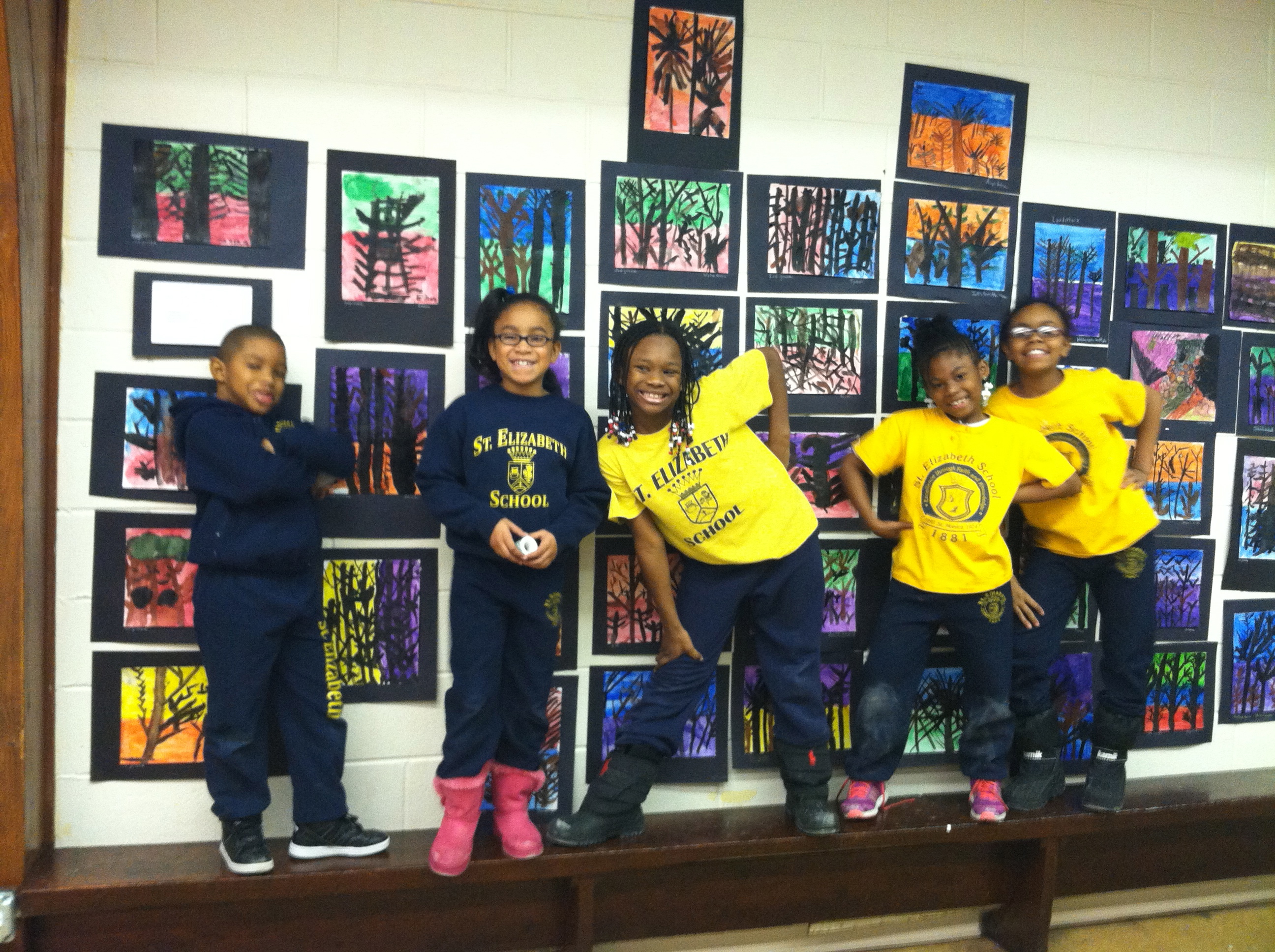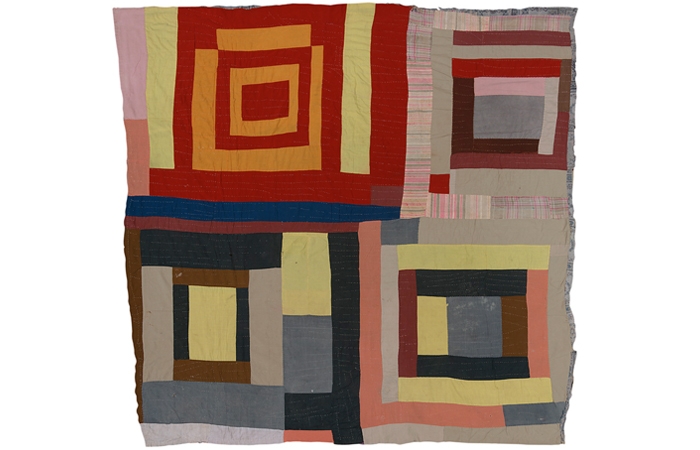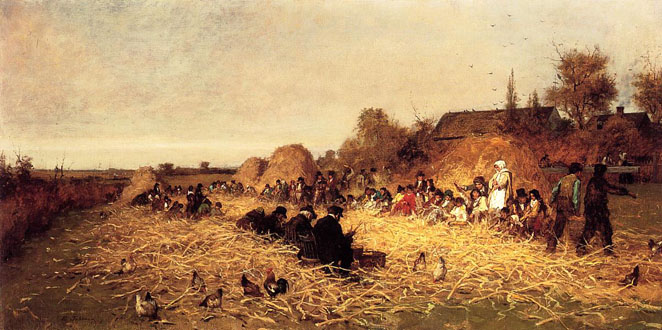Take a look at how these students learned about the role of the individual in creating vibrant communities, and displayed their ideas in vivid visual art.
Gail Wolf‘s students at St. Elizabeth School in Bronzeville created an amazing exhibition reflecting important values about family and community. Students from grades 1, 2, and 4 were asked to explore well-known art pieces and to learn as much as they could from them before creating their own art.

An essential part of Gail’s discussion with students was to encourage them to see how different artists use specific visual techniques to communicate their ideas to viewers. By learning from these “anchor” paintings, students created their own pieces which were exhibited later in the residency. Participants studied pieces like “The Husking Bee” by Eastman Johnson, Gee Bend Quilts in the “Housetop” design by the Gee Bend Quilters, “The Train Station” by Walter Ellison, and “Thanksgiving” by Doris Lee.
“The Train Station” by Walter Ellison
Gee Bend Quilts in the “Housetop” design by the Gee Bend Quilters
Students learned that a big idea can be found in small details such as colors, lines, shapes, and contrasts. Through careful consideration of these elements students learned how each feature can drastically shift the big idea of a piece. Gail also talked about attributes of colors, how to combine them, what colors can be used as primary and which are secondary, and how to create shading and emphasis.
“Thanksgiving” by Doris Lee was one of the pictures that students analyzed, answering questions such as where the scene takes place, who is portrayed, what they are doing, why they are doing it, and what feelings can be seen on people’s faces. After thorough evaluation of the artwork, students were asked to create their own artwork reflecting the Thanksgiving holiday. Students looked at each others’ drawings and discussed how well the idea was conveyed to a viewer.
“Thanksgiving” by Doris Lee
Another piece of artwork that was used for this activity was “Husking Bee” by Eastman Johnson. The painting depicts a farming community collecting the harvest in autumn. It was a great representation of how teamwork and unity in the neighborhood take care of the community’s needs, like food supplies for the winter. For this activity students had to draw an outline of their hand on paper and fill the space with contrasting colors, lines, and shapes. Students also created quilt blocks that later comprised a class paper quilt. The big idea: By contributing to the communal activity, every person puts a piece of their labor and thought into achieving a common goal. Every hand counts.
“Husking Bee” by Eastman Johnson
“This is a school that has very little exposure to visual art. I felt that the students were very interested in my class.”
Gail Wolf
Providing kids with painting tools and supplies is not enough; a teacher is the most important keystone. This activity was a great way to make students think about their community, what it represents and what unique characteristics it has. But the most important take away from this class was for students to see themselves as a reflection of the community and a part of it. Contributing, sharing, valuing, and respecting each other is what builds strong neighborhoods. Students need to talk about this from an early age to develop a sense of unity on a much bigger scale than just a close family. We applaud Gail’s ability to incorporate this into her residency!
Stay tuned for more info about an origami residency at St. Elizabeth with artist Sun Yun.
Please take a look at the photos of Gail Wolf’s students and their art pieces!




